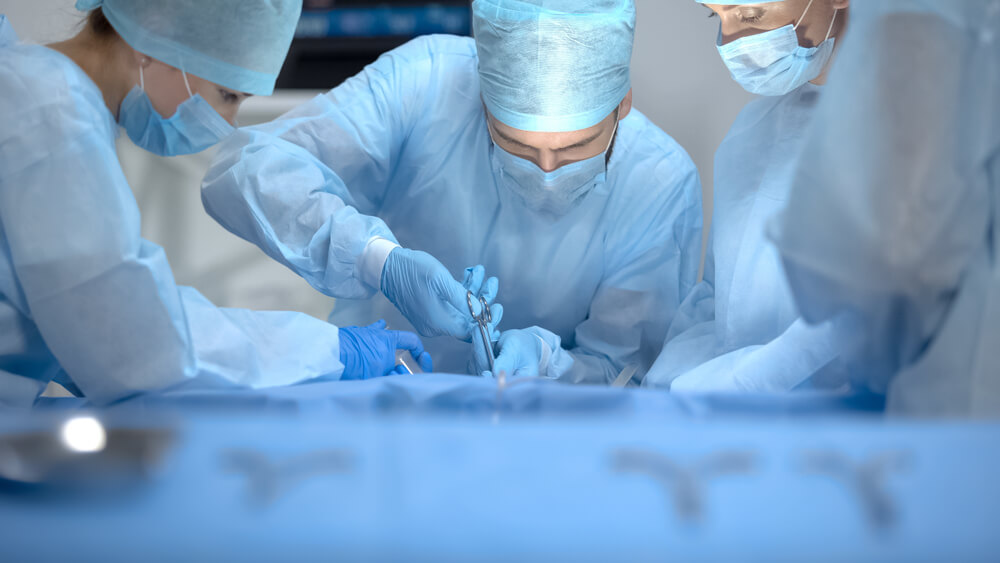When colon cancer has been identified in the early stages, colon cancer surgery is usually the main source of treatment when trying to remove it successfully. The surgery differs depending on what stage cancer has progressed to.
There are different surgical options available depending on different factors. They all aim to improve colon health by removing any cancerous sections. For those wanting to know what to expect after colon cancer surgery and the surgical options, keep reading below.
Preparation
Before surgery is carried out, there are certain requirements to ensure the procedure goes smoothly. This includes performing colon surgery on a clean and empty colon. To achieve this, patients must follow a strict diet beforehand. Along with consuming laxatives or enemas to ensure the colon is completely free of stool. For those that have previously undergone a colonoscopy, the preparation will be somewhat similar.
Initial Treatments
When undergoing a colonoscopy to check colon health, early stages of colon cancer can be identified. This is known as stage 0 and can be visible due to small tumors that are growing.
Once located through the use of a flexible tube that includes a small video camera, there are two different initial treatments your doctor can use.
Polypectomy – This treatment involves cutting the base of the cancerous lump. It’s done by using a wired loop inserted through the flexible tube used in the colonoscopy. The loop protrudes at the end of the tube and uses an electric current to cut what’s known as the polo from the colon wall.
Local excision – A local excision is slightly more advanced than the previous technique. With the use of different surgical tools, they are inserted into the flexible tube. They target small cancerous sections that are inside the lining along the colon. In addition, a small surrounding piece of the affected area is removed to reduce the chance of regrowth.
Advanced Treatments

If advanced colon surgery is needed, then a colectomy (one type of colon cancer surgery) is often used to remove it. This consists of the entire colon being removed or just a part of it. In addition, lymph nodes are removed as well.
Partial colectomy – When a section of the colon is removed, there are a few terms used to describe it. They include hemicolectomy, segmental resection, or colon resection. The surgeon carefully takes out the part of the colon impacted and a small amount of healthy colon on each side of it. The remaining colon is then reattached. A certain amount of lymph nodes will also be removed to check for any signs of cancer during the surgery.
Total colectomy – This consists of the entire colon being removed. The treatment is rare, as usually, only a section of the colon is typically cancerous. However, if a patient is suffering from multiple colon issues, it may be required to completely remove it.
How a Colectomy Is Carried Out
There are two different ways a colectomy is carried out. They consist of an open colectomy and a laparoscopic-assisted colectomy, both classified as colon resection.
Open colectomy – A single incision is made in the abdomen to reach the colon.
Laparoscopic-assisted colectomy – Rather than just one incision being made, multiple is made instead, using different specialized tools. A laparoscope, a long, thin, lighted tube similar to the one used in a colectomy, is inserted into the small incisions that remove the cancerous colon and lymph nodes.
The recovery period for laparoscopic-assisted surgery is often shorter than an open colectomy. This is due to the small incisions healing faster. Although laparoscopic-assisted colectomy is more complex, only seasoned medical surgeons can undertake the procedure without complications. Patients who decide this is the best treatment must carry out careful research to find the best practitioner.
Both colectomy surgery options have relatively the same survival rates for the possibility of cancer returning after the colon resection has been performed.
Blocked Colons
When a blocked colon occurs due to cancer, it’s typically a gradual process that results in the patient becoming sick over time. Sometimes, to prevent it from becoming completely blocked, a stent is used to keep the colon unblocked until the colon surgery can be performed. A stent is a metal tube that is hollow and expandable. It’s put inside the colonoscope so it can be carefully placed where the blockage is.
If a stent cannot be used due to the blockage already being too severe or a hole is present in the colon, surgery is usually carried out quickly. The procedure is similar to a colectomy whereby the cancer is removed. However, instead of the colon being reattached afterward, the top of the colon is attached to an opening which is called a stoma. This is created from the skin of the abdomen.
The opening allows for the stool to move through it and is disposed of with the help of a small bag outside the body by the stoma area. When an ileostomy must be performed, the procedure is the same, apart from the small intestine being connected to a stoma instead. The small bag outside of the body to remove stool is still used during an ileostomy.
When the patient’s colon health starts to recover from the surgery, a second operation is performed to reattach the colon back together. This can be undergone between 2 to 6 months, depending on how well the area has healed.
For those that require chemotherapy during the process, the second operation may require a longer waiting period. In certain situations where the blockage couldn’t be successfully removed or a stent couldn’t be placed, the second procedure will not be carried out.
After Colon Cancer Surgery Side Effects

There are a few things to know when figuring out what to expect after colon cancer surgery. Different side effects may occur after colon cancer surgery. The likelihood of side effects developing depends on the general health of the patient beforehand.
Initial side effects – These consist of bleeding, blood clots in the legs, and infection.
Patients will feel pain when waking up after colon cancer surgery, and medicine is typically required for a few days afterward. During this time, patients will be unable to eat and will be restricted to the amount of liquid they can drink. This allows the colon to recover properly, and after a few days, most people will be able to eat solid food again.
The bowel may take longer to function again for some. When this occurs, it’s called ileus. Many factors can contribute to this, such as the anesthesia or the operation itself.
Medicine used after the surgery to reduce pain can also impact how quickly the bowel starts to work again. If ileus does happen, patients are usually advised to delay the consumption of solid food or liquids to monitor the situation. Vomiting and nausea can develop, and doctors will perform more tests to ensure you are recovering correctly.
This answers the question, what to expect after colon cancer surgery.
Contact a Specialist Today
Cancer can be a scary word to hear for many of us. Thankfully, the medical sector has improved massively over the years, thanks to research and technology. Surgeries such as the ones discussed have a very high success rate.
For more information in the Palm Beach County, Florida area, the surgeon specialists at Advanced Surgical Physicians can perform operations with precision. Along with providing constant support during this difficult period. Contact us now to book an appointment today.



